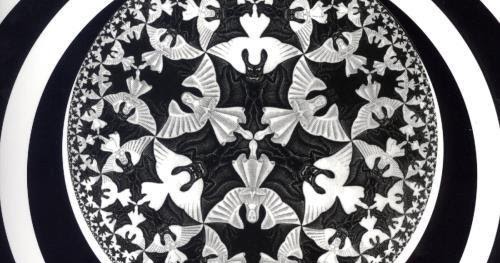Hypersense Theory

Hypersense is “archived meaning”. Hidden in various symbolic constructions so that the rule is fulfilled: the more you peer, the more you see. What is it for?
Firstly, for the same purpose, for which any other tight packaging, archives, etc. are needed. solutions. To "say a little, say a lot." That is, “save space” and “achieve your goal not by mass but by concentration”. Secondly, for marketing purposes - to make the user "stick": the more time he spends studying your proposal, the (other things being equal) he is more likely to accept it. Of course, this works to a certain limit (and with a number of reservations), but those who go beyond this limit have problems of a different plan, with hypersense, as a rule, not related.
Hypers meanings are not an invention of our time - in fact, almost any complex meaning can be considered as hypersense. "Beauty in the eye of the beholder" Oscard Ould. There is also a classic story about a student, a professor and alcoholic fish.
(long, shown here with a slight abbreviation)
More than 15 years ago, I entered the university at the Faculty of Natural Sciences. On the first day I went to the professor’s laboratory. He asked me a few questions about the purpose of my admission, expectations, and where I thought to apply the knowledge that I will receive at the university. I was interested in zoology, especially the life of insects, which I told the professor about. “When do you want to start?” The professor asked. “Right now,” I exclaimed enthusiastically. He seemed to like this answer because he vigorously pronounced “very well” and the professor immediately pulled a large vessel with alcoholized fish in a yellowish liquid from the shelf. “Take this fish,” he said, “and examine it carefully.” It is called Hemulon. After a while, let's see what you saw in it. ” With that, he went out, but returned a minute later with detailed instructions on how to handle a subject entrusted to me. “Only one can be a true naturalist,” he said, “who knows how to handle research subjects.”
On that first day, I carefully examined the fish in 10 minutes and went in search of a professor who, as it turned out, had already left the museum. I wandered among the strange animals stored on the top floor and returned to my fish, which had completely dried up by then. I splashed more liquid on her, as if trying to get her out of a swoon, and watched with excitement as she began to take on her former brilliant appearance. A little excitement receded and I had no choice but to return to observing my silent companion. Half an hour, an hour, another hour passed. Fish has become hateful to me. I turned her several times, looked into her eyes, examined her belly, sides, tail. I was desperate; and although dinner time had not yet arrived, I decided that I was hungry, and with a feeling of relief I placed the fish back in the vessel. I was free for an hour.
When I returned, they told me that the professor was in the museum, but he had already left and will return only in a few hours. My friends were too busy to chat with me. And I was forced to return to my "dearest" fish. With a sense of doom, I stared at her again. There were no appliances in the room, not even a magnifying glass. My hands, my eyes, and the fish — I was limited only by this. I tried the sharpness of fish teeth with my finger, began to count them and caught myself thinking that I was doing nonsense. Finally, an interesting thought occurred to me to draw a fish. In the process of drawing, I was surprised to notice new details. The professor found me in this occupation.
“Right,” he said, “a pencil is one of the best eyes.” I am also glad to see that you keep the observed object moist and the bottle clogged. " After these words of approval, he added: “Well, how?” The professor listened carefully to my report on the parts of the fish whose names were still unknown to me: eyeless eyes, lateral line, vertebral fin, forked tail, compressor form. When I finished, he paused, as if expecting more, and then with a sigh of disappointment he said: “You were not very attentive. You did not notice one of the most distinctive features of the object, which is located in front of your very nose. See more. See more! ” And he left me completely confused.
I was crushed, destroyed. There was something else in this nasty fish that I did not notice. And I set about the task with the firm intention to see everything. After a while I discovered a few more features. The criticism of the professor was fair. The second half of the day passed unnoticed. At the end of the day, a professor appeared and asked: "Have you already seen?" “No,” I replied, “not yet, but I realized how little I saw before.” “This is almost the most important,” said the professor seriously, “today I will not listen to you. Set aside the fish and go home. Maybe in the morning you can give a better answer. I will ask you before you continue your observations of the fish. ” I didn’t really like this idea. This meant that I not only had to think about this fish all night, thinking about what kind of obvious distinctive feature it was, but also, in the morning, Without refreshing my observations, I had to give a full account of them. A good memory, I did not differ. So I wandered home in great frustration.
The professor's heartfelt greeting the next morning was a little comforting. It seemed that he really wanted me to see what he saw in that fish. “Maybe you meant,” I asked, “that the fish has a symmetrical structure with paired organs?” His enthusiastic "Exactly!" was a reward for last night's sleepless hours. After he enthusiastically told me about the importance of this fact, I dared to ask what I should do next. “Well, of course, consider the fish,” he said and left me alone with my object of study. An hour later he returned to listen to my new catalog. “Good, very good,” he repeated, “but that is not all. Keep watching. ” And so for three long days he put fish in front of me, forbidding me to look at anything else or use whatever tools.
On the fourth day of my first research, next to the first fish, the professor placed a second fish of the same group. And I was given the task of pointing out the similarities and differences between them; then one more and one more was added to them, until the whole family lay in front of me, and a whole legion of jaws filled the table and the surrounding shelves. The stench turned into a pleasant smell, and even now the look of the old 15-centimeter, half-eaten corks evokes pleasant memories.
Thus, I studied the entire family of hemulons, their internal organs and bone structure. And in everything, even in the description of the parts, I remembered that in the method of observing the facts that I used, the most important thing was not to stop there and see, but to observe more and more. “The facts are very necessary for that,” the professor used to say, “in order to derive a generalizing law.” Eight months later, I reluctantly left these friends and began working with insects. But the experience that I gained was more valuable to me than the years of further research in my favorite groups.
On that first day, I carefully examined the fish in 10 minutes and went in search of a professor who, as it turned out, had already left the museum. I wandered among the strange animals stored on the top floor and returned to my fish, which had completely dried up by then. I splashed more liquid on her, as if trying to get her out of a swoon, and watched with excitement as she began to take on her former brilliant appearance. A little excitement receded and I had no choice but to return to observing my silent companion. Half an hour, an hour, another hour passed. Fish has become hateful to me. I turned her several times, looked into her eyes, examined her belly, sides, tail. I was desperate; and although dinner time had not yet arrived, I decided that I was hungry, and with a feeling of relief I placed the fish back in the vessel. I was free for an hour.
When I returned, they told me that the professor was in the museum, but he had already left and will return only in a few hours. My friends were too busy to chat with me. And I was forced to return to my "dearest" fish. With a sense of doom, I stared at her again. There were no appliances in the room, not even a magnifying glass. My hands, my eyes, and the fish — I was limited only by this. I tried the sharpness of fish teeth with my finger, began to count them and caught myself thinking that I was doing nonsense. Finally, an interesting thought occurred to me to draw a fish. In the process of drawing, I was surprised to notice new details. The professor found me in this occupation.
“Right,” he said, “a pencil is one of the best eyes.” I am also glad to see that you keep the observed object moist and the bottle clogged. " After these words of approval, he added: “Well, how?” The professor listened carefully to my report on the parts of the fish whose names were still unknown to me: eyeless eyes, lateral line, vertebral fin, forked tail, compressor form. When I finished, he paused, as if expecting more, and then with a sigh of disappointment he said: “You were not very attentive. You did not notice one of the most distinctive features of the object, which is located in front of your very nose. See more. See more! ” And he left me completely confused.
I was crushed, destroyed. There was something else in this nasty fish that I did not notice. And I set about the task with the firm intention to see everything. After a while I discovered a few more features. The criticism of the professor was fair. The second half of the day passed unnoticed. At the end of the day, a professor appeared and asked: "Have you already seen?" “No,” I replied, “not yet, but I realized how little I saw before.” “This is almost the most important,” said the professor seriously, “today I will not listen to you. Set aside the fish and go home. Maybe in the morning you can give a better answer. I will ask you before you continue your observations of the fish. ” I didn’t really like this idea. This meant that I not only had to think about this fish all night, thinking about what kind of obvious distinctive feature it was, but also, in the morning, Without refreshing my observations, I had to give a full account of them. A good memory, I did not differ. So I wandered home in great frustration.
The professor's heartfelt greeting the next morning was a little comforting. It seemed that he really wanted me to see what he saw in that fish. “Maybe you meant,” I asked, “that the fish has a symmetrical structure with paired organs?” His enthusiastic "Exactly!" was a reward for last night's sleepless hours. After he enthusiastically told me about the importance of this fact, I dared to ask what I should do next. “Well, of course, consider the fish,” he said and left me alone with my object of study. An hour later he returned to listen to my new catalog. “Good, very good,” he repeated, “but that is not all. Keep watching. ” And so for three long days he put fish in front of me, forbidding me to look at anything else or use whatever tools.
On the fourth day of my first research, next to the first fish, the professor placed a second fish of the same group. And I was given the task of pointing out the similarities and differences between them; then one more and one more was added to them, until the whole family lay in front of me, and a whole legion of jaws filled the table and the surrounding shelves. The stench turned into a pleasant smell, and even now the look of the old 15-centimeter, half-eaten corks evokes pleasant memories.
Thus, I studied the entire family of hemulons, their internal organs and bone structure. And in everything, even in the description of the parts, I remembered that in the method of observing the facts that I used, the most important thing was not to stop there and see, but to observe more and more. “The facts are very necessary for that,” the professor used to say, “in order to derive a generalizing law.” Eight months later, I reluctantly left these friends and began working with insects. But the experience that I gained was more valuable to me than the years of further research in my favorite groups.
In addition, it is believed that some ancient texts were written this way, using hypersense, which was a kind of encryption that protects knowledge from the uninitiated: the symbols carried both a phonetic load and a hieroglyphic one. The first was available to everyone, the second - only to the elite. But perhaps this is just a legend.
"Easter eggs" in games and software, palindromes, acrostics, some mnemonic techniques, aphorisms such as "to understand recursion, you must first understand recursion" or "one of the two most annoying things, this understatement" - these are all examples of hypersense. Often they are used as simple puzzles or entertainment for younger students, but this is not the end of their significance. Moreover, now hyper-senses are undergoing yet another renaissance - it has become difficult to “hook” a modern user, he is in a hurry, not curious and leaves at the slightest inconvenience. And he really doesn’t like to do the actions that he is forced to do - even if this is just a page scroll. Therefore, the usual “catchy” headings along with informative subheadings work worse. Proper structuring of information, of course, it has not lost relevance - and is unlikely to ever lose - but it alone is not enough. Everyone is doing it and this is no longer enough. Therefore, hypersenses are used more and more often. In fact, hyper sense is also a structuring of information, not just “horizontally”, but “vertically”, “by layers”. If the "layers" are "removed", opened easily - attention and understanding "float deep into themselves." What was required to be achieved.
Yes, you yourself probably saw something similar - for example, small pale buttons on the site page. It would seem, why make the user break their eyes? Well this is a direct damage to usability. But you still saw these buttons, and what is written on them - read. And how would the page look if everything was larger and more contrasting? She most likely would have looked overloaded. And it would cause not so much a desire to study it as a desire to leave her. "Complex, multi-book." Therefore, the designer did so - and (if he didn’t take the stick) did quite reasonable. In any case, you lingered on the page for a second or two longer than you could. Not so much to make you angry - but enough for Yandex.Metrica to notice this. Yea Yea.

A well-made hypersense can make the user stare at one screen for a long time without losing attention or negative emotions - on the contrary, he will be interested. And prepared in this way - he will press the button, and the page will scroll much more readily. Which is especially valuable when applied to an audience of mobile devices. But to achieve such an effect, of course, you have to work hard.
Due to its “verticality”, “deep focus”, “orthogonality to other methods”, hyper-senses are synergistically combined with other techniques. For example, with animation, interactivity or voice acting. But they can also be harmful - where extreme clarity is needed at first glance, and any ambiguities and “delays in understanding” are extremely undesirable (charters, important instructions, contracts, etc.). Gandalf at the gates of Moria for a long time tried to find hypersense where he was not - and this delay almost cost the Ring Keepers very expensive.

Nevertheless, there is reason to believe that the future lies precisely with hypersense - giving any information (in the broadest sense of the word) maximum volume, maximum number of measurements. To make everything look extremely simple, understandable and minimalistic - but at the same time eagerly respond to attention, obediently revealing itself, “unpacking” in response, meaningfully blooming with new useful meanings.
The main thing is not to overdo it, of course. And then, in fact, “unpacking” the “unpacked” hypersense so far has been very poorly managed. Even in implementations due to the camera tracking the user's gaze.
